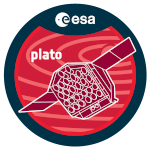PLATO achieves high photometric precision while covering a large field of view thanks to its segmented optical design of 4 groups of 6 cameras. To obtain the best SNR possible for each target, the fluxes obtained by up to 24 cameras with different random and systematic noises, over multiple quarters, must be combined. This has led to the design of a sophisticated calibration and correction pipeline unique to PLATO. The resulting properties of the science ready light curves are substantially different from that of Kepler or TESS. In this talk, I will describe the most critical aspects of the correction pipeline and their impact for the scientific exploitation of the data, in particular for applications which are not the core-science program of PLATO.

 PDF version
PDF version
